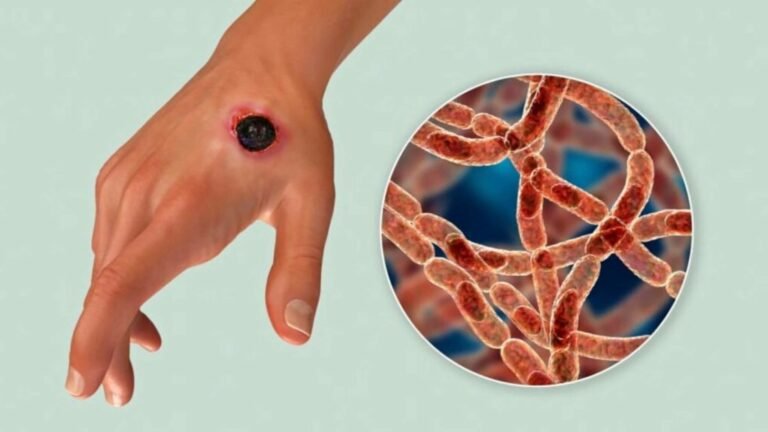Pain Relief with Essential Oils

You’re not imagining things; essential oils are everywhere these days. They’ve grown in popularity as people have started seeking natural aids for relaxation and pain relief. Once found mostly in holistic health shops, the healing oils are now widely available—from doctor offices to spas and salons to drugstores. But with popularity can come confusion: What types of essential oils should you buy? How do you know if you’re getting good-quality oils? Which oils work best with certain conditions?
To offer our readers clarity, we’ve asked essential oils experts to offer guidance in selecting and using essential oils.
How Essential Oils Work
Essential oils are plant extracts that can be inhaled, consumed or applied topically. According to Josh Axe, DNM, CNS, DC, the different chemical compounds in the oils send different signals to the brain.
“To put it simply, when you inhale, apply or consume an essential oil, it enters your bloodstream, and the chemicals that make up the oil send messages to your brain,” he explains. “These messages will vary, depending on the compounds found in the oil, but they commonly trigger an anti-inflammatory response, a sedative response or a pain-relieving response.”
In the plant kingdom, the varying compounds serve to protect plants in different ways. While people are much different than plants, we too can find healing from many of the properties found in the world of flora.
“These plants contain chemical compounds that are in place to help them survive in the wild,” says Dr. Axe. “We’re getting those same protective and healing properties when we use the plant’s oils. For example, the oregano plant naturally repels pathogenic bacteria, viruses and parasites that are found in nature. That’s why oregano essential oil is considered a natural antibiotic.”
Conditions that Benefit from Essential Oil Treatments
Essential oils are most commonly associated with stress relief and relaxation. That’s why massage therapists so frequently employ them. Amy Shu, DC, a chiropractic physician, says that while that’s a popular use, essential oils are effective for a variety of concerns. “They can create so many other health benefits!” she says.
The health benefits of essential oils aren’t just anecdotal; they’re backed up by science. Dr. Axe says there are more than 17,000 medical studies on essential oils that prove their therapeutic benefits for a number of health concerns—among these are chronic pain and stress.
“Every single essential oil is made up of its own unique combination of medicinal properties,” he says. “Some oils, like peppermint, have cooling and anti-inflammatory properties, so they are great choices for reducing chronic pain. Other oils, such as lavender, have sedative properties that work to induce relaxation.
“Essential oils can also be used to aid digestion, promote detoxification and balance your hormones naturally,” he continues. “It would be difficult to pinpoint just one condition that can be benefited by essential oils, but they are most commonly used to induce relaxation, reduce stress, relieve pain, boost energy levels and support immunity.”
Dr. Axe says that essential oils “wear many, many hats” and go beyond health treatments to enhance personal care and cleaning products, too.
Selecting the Oils that Will Target Your Condition
Dr. Shu says experimentation is key when it comes to selecting oils, but there are some tried-and-true applications. “In my office, we try to work with all aspects of what is going on to determine which oil to try first,” she says. “Making sure the right nutritional supplements are taken to reduce inflammation is key, and then supporting the patient’s individual body with essential oils can greatly reduce their discomfort. ”
Some of the most dependable essential oil treatments include:
- Head tension—peppermint
- General pain relief—peppermint
- Inflammation—frankincense
- Muscle pain—peppermint
- Joint pain and function—peppermint, marjoram, lemongrass, cypress and copaiba
- Relaxation—lavender, Roman chamomile, ylang ylang and frankincense
- Energy—peppermint, lemon, grapefruit and rosemary
- Immune support and defense against bacterial, viral and fungal infections—oregano, eucalyptus, lemon, myrrh
Peppermint oil is so frequently used for pain conditions, in particular, because it is cooling, invigorating and has anti-inflammatory properties. The most popular and well-researched essential oil for relaxation, tension and stress is lavender, says Dr. Axe.
Dr. Shu says that in addition to recommending essential oils to patients, she also uses them in her office to promote relaxation, energy and—especially during the winter months—immune system building.
How to Use Essential Oils
Essential oils can be used topically or aromatically—and in some cases they can even be consumed.
Topically
“If you’re looking to benefit a specific area of your body, or you want the oil to be absorbed into your skin quickly, you can use the oils topically,” says Dr. Axe.
To apply an essential oil to your skin, it’s important to pair it with carrier oil like coconut oil, almond oil, jojoba oil, avocado oil or fractionated coconut oil. The carrier oil helps you apply the essential oil more broadly to your skin, and helps you avoid the potential skin irritation that can come with an undiluted essential oil. Carrier oils can also help the oil remain on your skin for longer.
Dr. Shu says she recommends always using carrier oil when applying an essential oil topically. “Since essential oils are aromatic compounds, 70 to 80 percent will flash off if placed directly on the skin rather than used with a carrier oil,” she says. “Dilution helps to ensure you’re absorbing more of the oil.”
Dr. Axe explains that carrier oils have larger particles, and so they also slow down the absorption rate of the essential oil.
“Carrier oils will also dilute the essential oil so that you can cover a larger surface area without having to use more drops,” he continues. “This is important because essential oils are very potent, and you only want to use a few drops at a time. By combining two drops of lavender oil, for instance, with a half teaspoon of coconut oil, you can cover your neck, temples and feet—helping you to feel calm and relaxed for hours.”
And this also saves you money by allowing your essential oils to last longer, points out Dr. Shu.
When it comes to the location of treatment, you should apply the oils directly to or near the painful area. For example you can apply peppermint oil to the temples and back of the neck for a headache, or to the knee for a painful knee joint.
The recommended dosage is typically one drop of essential oil to three drops of carrier oil, says Dr. Shu. She also recommends using several small doses throughout the day instead of a single large dose. “Start with the lowest possible dose (one to two drops),” she says. “And because every person is unique, the dose will vary for each individual based on size, age and overall health status. I also recommend that people skin patch tests to make sure they are not sensitive to the oil. And, of course, they should stop if they have any reactions.”
Diffused
Diffusing oil with a diffuser allows the scent of the oil to fill the room. This method can be just as supportive to your health as rubbing the oil onto your skin, says Dr. Shu. “Our sense of smell is really an amazing thing,” she says. “Have you ever smelled something and it instantly reminded you of something—like the scent of apple pie automatically reminding you of your grandmother? This is because the way our brains process smells is powerful. Diffusing oils should also create powerful associations in the brain.”
Dr. Axe agrees that scents can have a profound impact on us. “When you inhale or diffuse an essential oil, this is called aromatherapy,” he explains. “It may seem impossible, but just the smell of these oils is having therapeutic effects on your body and mind. The molecules of the oil are released as vapor into the air, and they carry the oil’s scent. Then the scent sends messages to your brain, triggering a bodily response. This means that some benefits of essential oils come just from inhaling its scent – you don’t even have to apply or consume them for them to be effective.”
Dr. Axe offers a couple of practical examples of diffusing. He says that he personally diffuses lavender in his bedroom as a regular part of his nighttime routine to promote restful sleep. And during the winter months, he recommends diffusing infection-fighting oils like oregano, eucalyptus, lemon or myrrh.
Ingested
Dr. Axe advises speaking with a doctor before consuming any oil, and ensuring that the oil is a USDA-certified organic oil that is labeled as a dietary supplement. “It should only be consumed under the guidance of your health care practitioner for the full course of treatment,” he says.
Other
You can also use oils to clean. Antibacterial oils, such as oregano, can be rubbed onto kitchen and bathroom counters, and relaxing or invigorating scents can be added to homemade all-purpose cleaners.
Pain relief with essential oilsWhen to Exercise Caution
Some people may experience allergic reactions to certain oils—this typically happens when the person has an existing allergy to the plant the oil is derived from. “If, for example, you’re allergic to lavender, don’t use lavender oil,” says Dr. Shu.
As far as other considerations go, Drs. Axe and Shu both advise that essential oil use be monitored in people with compromised immune systems, the elderly, children and people with sensitive skin. Those on certain medications, such as blood thinners, should also seek medical counsel before using essential oils, as some oils can increase the side effects of certain medications. Women who are pregnant or breastfeeding should consult with a health care provider before using essential oils. This is because of the risk of premature contractions, as well as unknown risks.
“Be vigilant in your research and contact your health care provider to make sure you’re being safe,” says Dr. Shu.
Dr. Axe also cautions that you verify the proper use of the oil. “Some oils are better for topical use, while others work better aromatically or internally,” he says.
If you’re taking an oil internally, use only very small amounts—one to two drops at a time, two to three times per day, says Dr. Axe. If you experience any stomach discomfort after repeated use, it may be time to take a break. “When in doubt, ask your health care provider,” he says.
For other methods of essential oil use, don’t go overboard. “When you’re diffusing an oil, do it for about 30–45 minutes at a time, two to three times daily,” says Dr. Axe. “If you’re using an oil topically, follow the two to three times a day rule, using only a couple of drops at a time. When used correctly, essential oils are generally safe and have powerful benefits.”
What to Look for When Buying Essential Oils
Amy Shu, DC, a chiropractic physician and owner of Winston Chiropractic Care, and Josh Axe, DNM, CNS, DC, founder of Ancient Nutrition and DrAxe.com, offer the following recommendations for buying essential oils:
- Do your research. “Not all essential oils are created equally; quality is important,” says Dr. Shu. “Essential oils are a nonregulated industry, meaning anyone can label an oil ‘pure’ or ‘organic.’”
- Seek a reputable company that conducts third-party testing of their oils and only sells Certified Pure Therapeutic Grade (CPTG) essential oils.
- Pay attention to the label instructions. “If it states ‘for external use only,’ I would be cautious since you’re breathing in essential oils when you’re diffusing them,” says Dr. Shu.
- Make sure the oils are indigenously sourced. “This means it uses ingredients from where the plant originally grows,” says Dr. Axe.
Verify that the label provides the plant’s Latin name and common name.
PainPathways Magazine
PainPathways is the first, only and ultimate pain magazine. First published in spring 2008, PainPathways is the culmination of the vision of Richard L. Rauck, MD, to provide a shared resource for people living with and caring for others in pain. This quarterly resource not only provides in-depth information on current treatments, therapies and research studies but also connects people who live with pain, both personally and professionally.
View All By PainPathways






